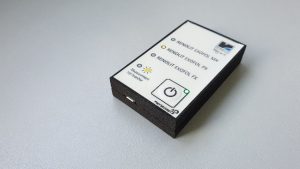 A major factor to deal with in sorting and recycling PVC is one inevitable impediment: the existing state-of-the-art technology doesn’t go far enough when you’ve got so many types of polymers. And what about recycling food contact material? Polysecure came up with Tracer-Based-Sorting.
A major factor to deal with in sorting and recycling PVC is one inevitable impediment: the existing state-of-the-art technology doesn’t go far enough when you’ve got so many types of polymers. And what about recycling food contact material? Polysecure came up with Tracer-Based-Sorting.
“Before that, the tech called NIR could only identify the main polymers like PVC, PP, PA, et cetera,” says Jochen Moesslein, CEO of Polysecure. “But in order to re-use technical polymers, you need further differentiation in sub-classes such as PA without glass fibre and with 30% glass fibre.”
What’s more, Jochen says, if you want to re-use food contact material, it has to be detectable by the sorting technology. That’s where Tracer-Based-Sorting (TBS) comes in, with a sorting code system, such as 50 sorting codes per polymer.
“It’s like letter sorting by ZIP code,” Jochen says. “With TBS you disperse the tracers in the plastics, like a new type of additive.” Together with the optics experts at ZEISS, Polysecure’s development has reached a level of 10 ppm of tracer being sufficient to mark bulk plastics so that they can be precisely sorted.
Polysecure can also forgery-proof your product with their ‘’Particle Fingerprint’’ system. “With the random 3D image of our fluorescent particles, your product receives a non-copyable fingerprint,” says Jochen. More info and video on their website.
